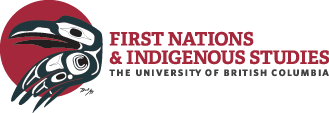The creation of Indigenous Foundations
In this section
The creation of Indigenous Foundations
Students frequently come to university with varying levels of knowledge about Aboriginal topics. As a result, discussions in the classroom regarding Aboriginal topics rarely move beyond an introductory level—even in third and fourth level classes. Indigenous Foundations was created in response to feedback from students and faculty who were frustrated that they could rarely have meaningful classroom discussions about topics related to Aboriginal peoples, histories, politics and cultures. This has been documented in the project What I Learned In Class Today.
Indigenous Foundations has been developed by First Nations and Indigenous Studies at the University of British Columbia to support students in their studies, and to provide instructors, researchers and the broader public with a starting point to their investigations of issues relevant to Aboriginal histories, peoples, and cultures. It is intended to provide concise and accurate information on core topics that students, instructors and others have identified as fundamental to engaging with Aboriginal content in their coursework, and in current public debates.
Particular topics on this website may be related to other content in interesting and unexpected ways. For this reason, Indigenous Foundations features a flexible navigation system designed specifically for this project that connects content by its relationships to other subjects, rather than presenting content within a solely hierarchical field. By doing so, the website seeks to illustrate the relationships between different subjects relevant to Aboriginal peoples and history, and investigate a way of thinking about historical and conceptual relationships in ways that are fundamental to the field of Indigenous studies.
We gratefully acknowledge the financial support for this project provided
by UBC students via the Teaching and Learning Enhancement Fund.
About the banner
The banner features the image of a a paddle from the Heiltsuk Nation, based on the central coast of what is now British Columbia. We use this image courtesy UBC Museum of Anthropology, Vancouver, Canada. It was photographed by Kyla Bailey, and is object Nb3.1485 in the museum’s collection. This paddle was chosen in part to represent our location along the Pacific Northwest coast. It was carved around 1900 and is made with cedar and abalone shell.
We believe the paddle invokes a sense of movement and fluidity. For us, it emphasizes the ongoing and inseparable connections between past, present and future.
The paddle is also a tool for transport. We believe the process of learning is ongoing; regardless of where we are in our lives, we are always learning, we are always students. Our belief is that learning is a journey, and we hope this is emphasized in the connections presented throughout Indigenous Foundations.
Graphic design of the banner and other parts of the site is by Emma Kesler.
Navigation system
The navigation system was created specifically for Indigenous Foundations by Shaffiq Rahemtullah and Linc Kesler.
Indigenous Foundations operates using a navigation system that will link related topics together as you navigate through the website. This flexible navigation system was designed specifically for this project and connects content by its relationships to other subjects, rather than presenting content withing a solely hierarchical field. By doing so, the website seeks to illustrate the relationships between different subjects, and investigate a way of thinking about historical and conceptual relationships in ways that are fundamental to the field of Indigenous studies.
This map can be seen by clicking the “Site Map” button at the very top, right of the webpage.
Copyright
All content, unless otherwise indicated, is copyright © 2009 First Nations and Indigenous Studies.
Written content
First Nations and Indigenous Studies (FNIS) authorizes citations from Indigenous Foundations so long as they adhere to fair use and fair dealing standards. In addition, content may be reproduced without cost for educational purposes, so long as any content is duly cited, and any edits do not alter the meaning or intent of the content.
Images
FNIS cannot authorize reproduction of images. Permission for reproduction of images must be requested from the original source.
Videos
Videos cannot be reproduced, although we welcome you to link to videos appearing on our website.
How to cite from Indigenous Foundations
If there is no author listed, cite First Nations and Indigenous Studies as the author.
MLA format
Parenthetical (in-text): In-text citations should follow a sentence or paragraph in which you have quoted from, summarized, or borrowed ideas from another source. The citation should appear in parentheses and contain the author’s surname. If there is no author indicated, you should cite First Nations and Indigenous Studies.
E.g.,
Some have claimed the Indian Act is a form of apartheid (Hanson).
Many people continue to debate whether Aboriginal fisheries are “race-based” (First Nations and Indigenous Studies).
Bibliographic/Works Cited:
Author surname, first name. “Title of article.” Indigenous Foundations. First Nations and Indigenous Studies UBC, 2009. Website. [Date accessed].
Chicago format
Foot/endnote:
1. Author surname, first name. “Article name”. Indigenous Foundations. indigenousfoundations.arts.ubc.ca. (accessed Month, day, year).
Bibliography:
Author surname, first name. “Article name”. Indigenous Foundations. indigenousfoundations.arts.ubc.ca. (accessed Month, day, year).
Further questions?
Feel free to contact First Nations and Indigenous Studies at fnis.arts@ubc.ca

